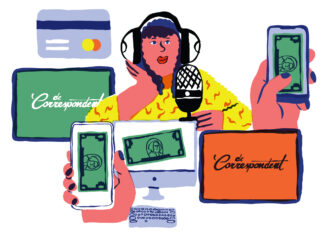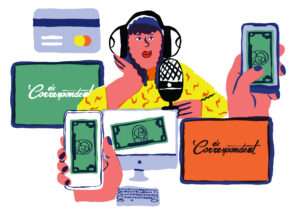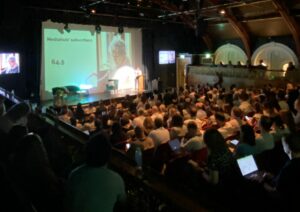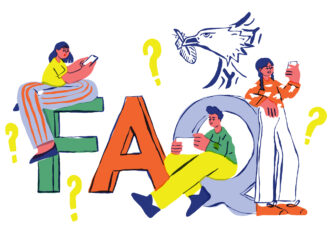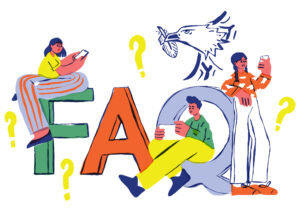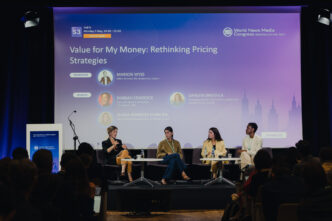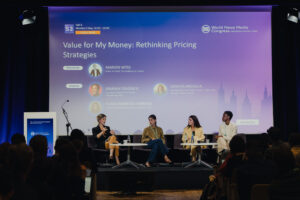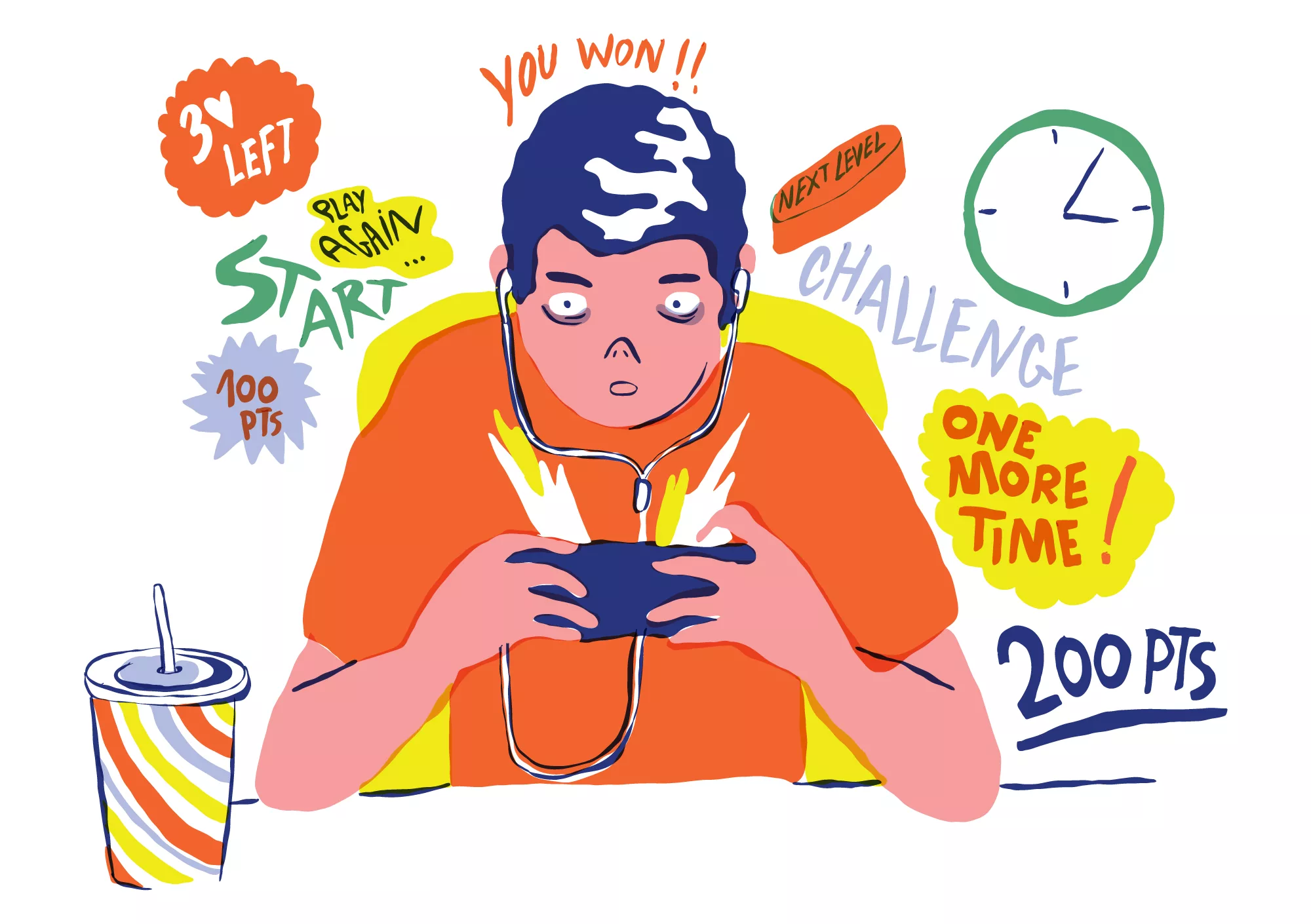

Julien Ancel is the founder of Anthm, a gaming platform designed for media organizations wanting to adopt the gaming strategy that revolutionized the New York Times. However, it's important to stress that the success of this strategy is not based solely on the fame of the New York Times, but on the meticulous application of sophisticated and innovative game mechanics, detailed in the article.
A pioneer in this approach, The New York Times began its adventure in 2009, before acquiring Wordle in February 2022. This popular game, in which participants must guess a hidden word in six attempts, attracts millions of users every month.
The value of gamification for their wider strategy is clear from the data shared in their 2023 investor report. According to the document, The New York Times recorded over 8 billion plays over the year, indicating that players are significantly more engaged with news than non-players. Jonathan Knight, head of games at The New York Times, also asserts in an interview, “Those who play our games are much more loyal to the news than those who don’t.”
The secret? The New York Times has captured the essence of human pleasure, turning each game into a dopamine-fueled exploration of our desire for discovery. Let’s find out together how they harness this powerful engine of engagement.
Dopamine, the driving force
To find out, we need to look at what drives our curiosity. Specifically, dopamine, a neurotransmitter often reduced to its role as a reward hormone, but which is in fact the fuel of anticipation and curiosity. Understanding its impact is crucial to understanding why games are so captivating.
It’s everywhere…
- Tinder: the “swipe” gesture and the excitement of discovering new profiles
- Duolingo: the series of consecutive days, or “daily streaks”, that motivate regular learning
- TikTok/Instagram/Facebook: endless content scrolling
- Coingecko: regular consultation of the value of one’s crypto-currency portfolio
- Mobile games: the instant rewards and easy levels at the start that encourage you to play again and again

These examples illustrate how dopamine drives us back to activities that pique our interest and reward our curiosity, often without an immediate goal.
Games and social networks use this dynamic not only for instant gratification, but also to feed our desire for discovery and achievement. It’s a powerful strategy for keeping users engaged.
Like the dopamine-champion apps, The New York Times implements several strategies to boost community engagement.
> You’ll also enjoy: Wordle and beyond: How games are impacting publisher newsletters
The New York Times engagement strategy deciphered through the “Hook” model.
The New York Time’s engagement strategy, with games like Wordle, can be examined through Nir Eyal’s “Hook model”. This model helps to understand how these games become daily rituals, captivating and retaining users.
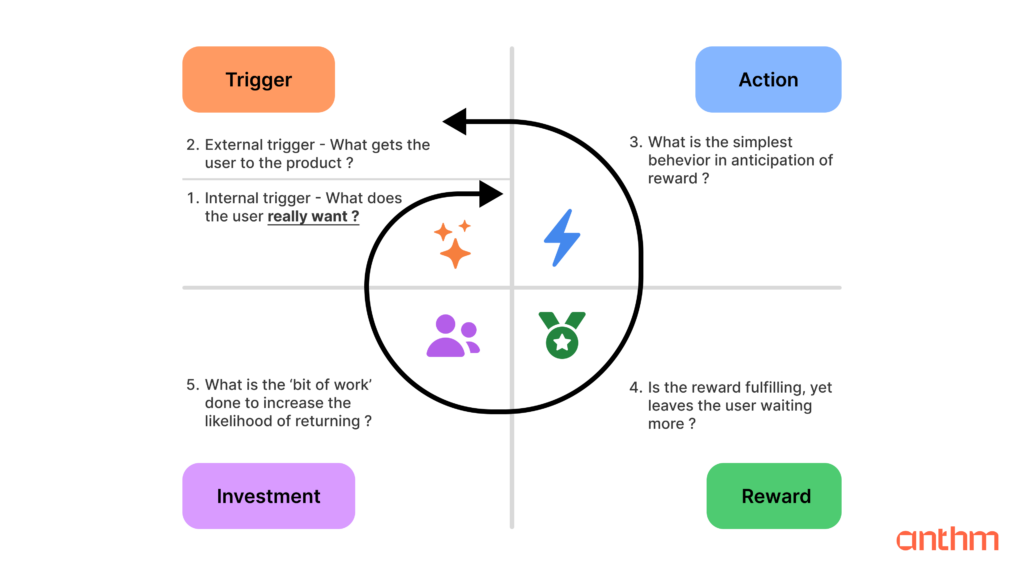
1. Triggers
Triggers are stimuli that prompt users to perform an action. They can be external, such as notifications or promotions, or internal, linked to emotions and personal habits. To be effective, a trigger must create a routine during which the user tends to act automatically in response to the stimuli to which he or she is exposed.
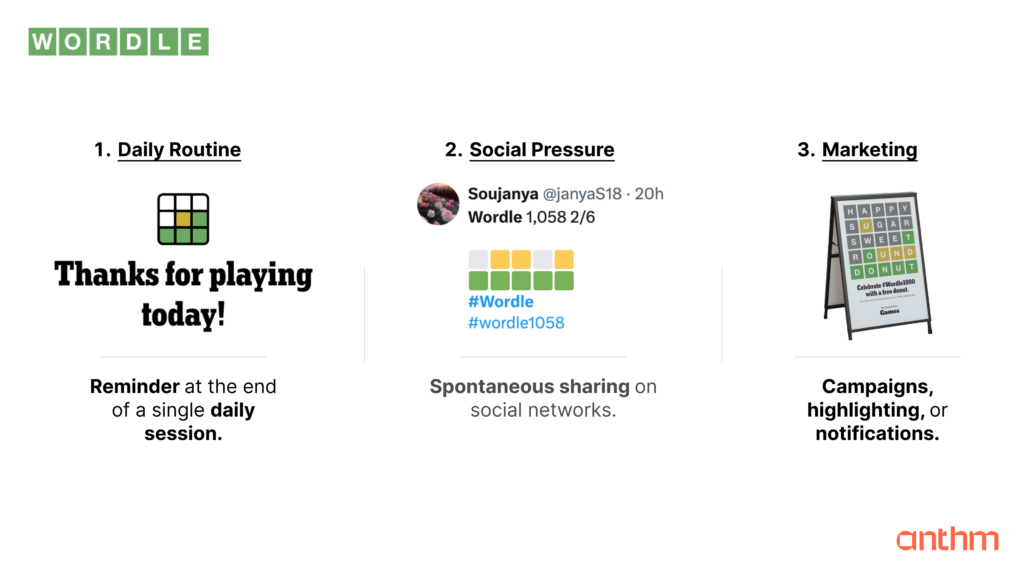
Applied to the New York Times:
- Daily routine (visual countdowns + loss aversion)
- Social pressure with your network asking you for your score on the daily grid
- Marketing, and creating FOMO – wanting to accomplish so you don’t miss out, bringing people to NYT, notifications
2. Action
The action, in the Hook model, is the task that the user is encouraged to perform. It must be simple enough for the user to accomplish with a minimum of effort, yet engaging and challenging enough to satisfy their expectation.
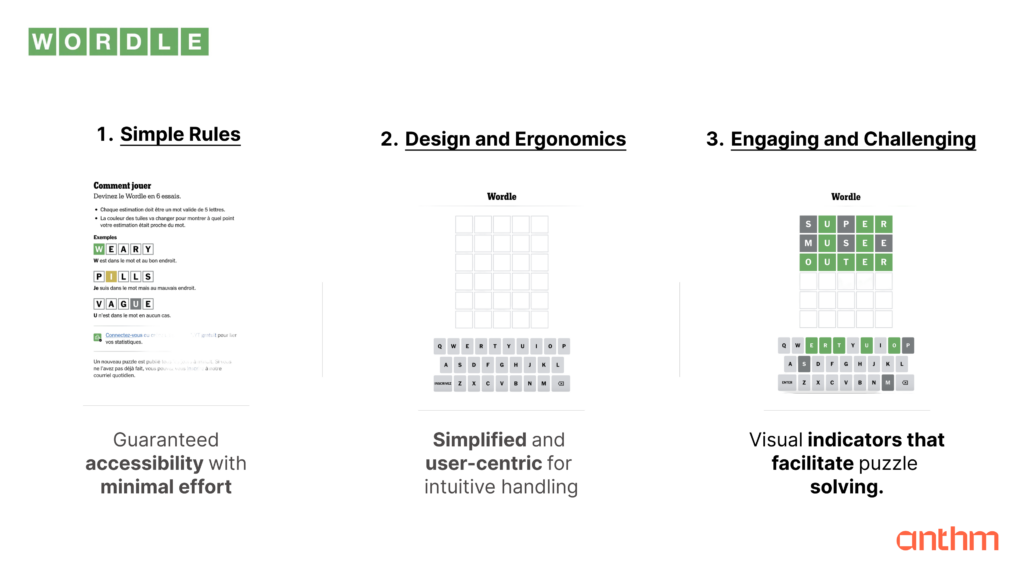
- Simple rules that make the game accessible and don’t require a huge amount of effort
- Simplified, clean design
- Engaging with the right level of difficulty
- Visual indicators that facilitate puzzle solving
3. The reward
Rewards are what the user gets after performing the action. In an effective model, these rewards must meet expectations and reinforce the user’s commitment. They can be tangible, such as points or badges, or intangible, such as a feeling of satisfaction.
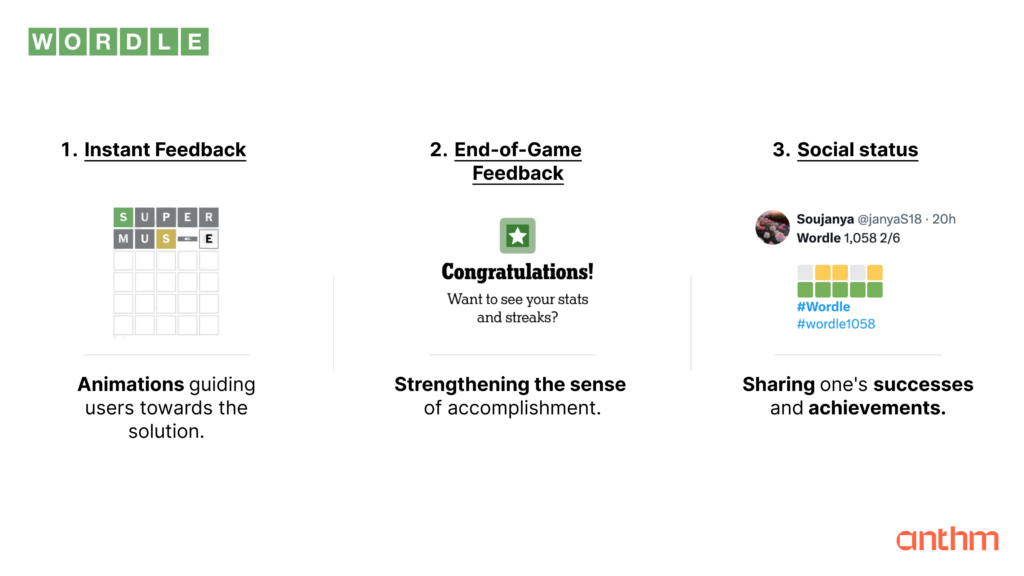
- Instant feedback
- End-of-game feedback, sense of accomplishment
- Social status – ability to share success with others
4. Investment
Investment refers to the time, data, effort or money that users are willing to devote after receiving a reward. This investment increases the likelihood that the user will return, as it reinforces the personal value that the user associates with the product…
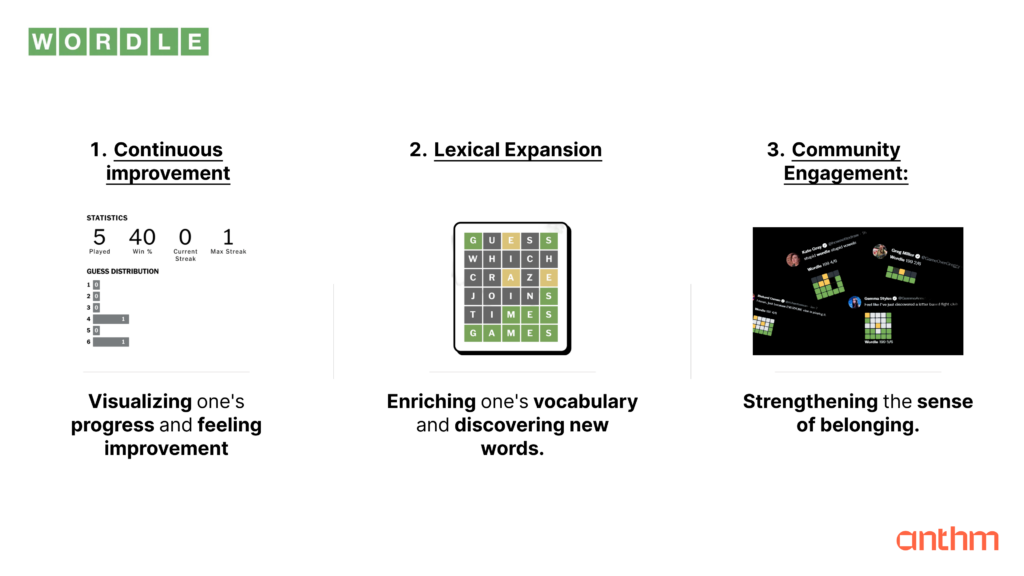
- Continuous improvement – being able to see your progress
- Sense of belonging and being part of a community
The rules of the game have changed; now it’s your turn!
As the media landscape of 2024 continues to transform with the integration of games into loyalty strategies, The New York Times sets itself up as an example of this revolution.
The success of Wordle and other games is no accident, but the result of a deep understanding of the mechanisms that govern user engagement.
Using examples from everyday life to illustrate the effect of games on our behavior, this article has demystified the principles that make them attractive and rewarding.
Integrating these mechanisms is not a matter of copying formulas, but of understanding their principles in order to use them to best effect.
The New York Times has taken the plunge, turning playful engagement into a serious and profitable business. You can succeed with this strategy too. Now that you’ve got the first bricks, get in the game.

